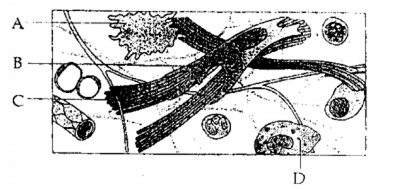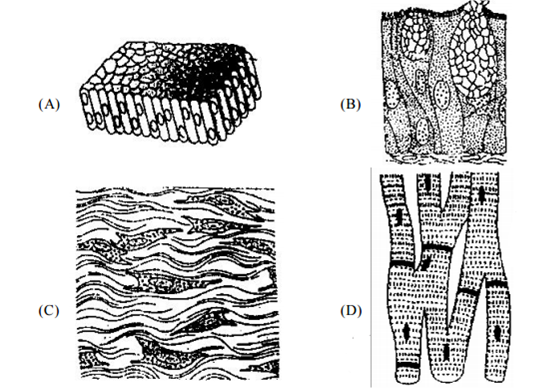 Multiple Choice Questions
Multiple Choice QuestionsWhich one of the following cellular parts is correctly described?
Thylakoids - flattened membranous sacs forming the grana of chloroplasts
Centrioles - sites for active RNA synthesis
Ribosomes - those on chloroplasts are larger (80s) while those in the cytoplasm are smaller (70s)
Ribosomes - those on chloroplasts are larger (80s) while those in the cytoplasm are smaller (70s)
A.
Thylakoids - flattened membranous sacs forming the grana of chloroplasts
Centrioles are a membranous hollow microcylinders occur in pair and play important role in cell division.
Ribosomes in chloroplast are 70 s type while those of cytoplasm in eukaryotic cells are 80 S type. The enzymes of lysosome (called suicidal bag) function at acidic pH (i.e., 5).
Identify the meiotic stage in which the homologous chromosomes separate while the sister chromatids remain associated at their centromeres
metaphase I
metaphase II
anaphase I
anaphase I
Which one of the following biomolecules is correctly characterised?
Lecithin – A phosphorylated glyceride found in cell membrane
Palmitic acid – An unsaturated fatty acid with 18 carbon atoms
Adenylic acid – adenosine with a glucose phosphate molecule
Adenylic acid – adenosine with a glucose phosphate molecule
Given below is the diagrammatic sketch of a certain type of connective tissue. Identify the parts labelled A, B, C and D, and select the right option about them.
| Part A | Part B | Part C | Part D |
| Macrophage | Fibroblast | Collagen fibres | Mast cells |
| Part A | Part B | Part C | Part D |
| Mast cell | Macrophage | Fibroblast | Collagen fibres |
| Part A | Part B | Part C | Part D |
| Macrophage | Collagen fibres | Fibroblast | Mast cell |
| Part A | Part B | Part C | Part D |
| Macrophage | Collagen fibres | Fibroblast | Mast cell |
Which one of the following options gives the correct categorisation of six animals according to the type of nitrogenous wastes (A, B, C), they give out?
| A Ammonotelic |
B Ureotelic |
C Uricotelic |
| Pigeon, Humans | Aquatic Amphibia, Lizards | Cockroach, Frog |
| A Ammonotelic |
B Ureotelic |
C Uricotelic |
| Frog, Lizards | Aquatic Amphibia, Humans | Cockroach, Pigeon |
| A Ammonotelic |
B Ureotelic |
C Uricotelic |
| Aquatic Amphibia | Frog, Humans | Pigeon, Lizards, Cockroach |
| A Ammonotelic |
B Ureotelic |
C Uricotelic |
| Aquatic Amphibia | Frog, Humans | Pigeon, Lizards, Cockroach |
Which one of the following pairs of chemical substances, is correctly categorised?
Calcitonin and thymosin - Thyroid hormones
Pepsin and prolactin - Two digestive enzymes secreted in stomach
Troponin and myosin - Complex proteins in striated muscles
Troponin and myosin - Complex proteins in striated muscles
The supportive skeletal structures in the human external ears and in the nose tip are examples of
ligament
areolar tissue
bone
bone
The four sketches (A, B, C and D) given below, represent four different types of animal tissues. Which one of these is correctly identified in the options given, along with its correct location and function?
| Tissue | Location | Function |
| Glandular epithelium | Intestine | Secretion |
| Tissue | Location | Function |
| Collagen fibres | Cartilage | Attach skeletal muscles to bones |
| Tissue | Location | Function |
| Smooth muscle tissue | Heart | Heart contarction |
| Tissue | Location | Function |
| Smooth muscle tissue | Heart | Heart contarction |
A fall in glomeruclar filtration rat (GFR) activates
Juxtra glomerular cells to release renin
Adrenal cortex to release aldosterone
Adrenal medulla to release adrenaline
Adrenal medulla to release adrenaline
Which one of the following characteristics is common both in humans and adult frogs?
Four chambered heart
Internal fertilisation
Nucleated RBCs
Nucleated RBCs
